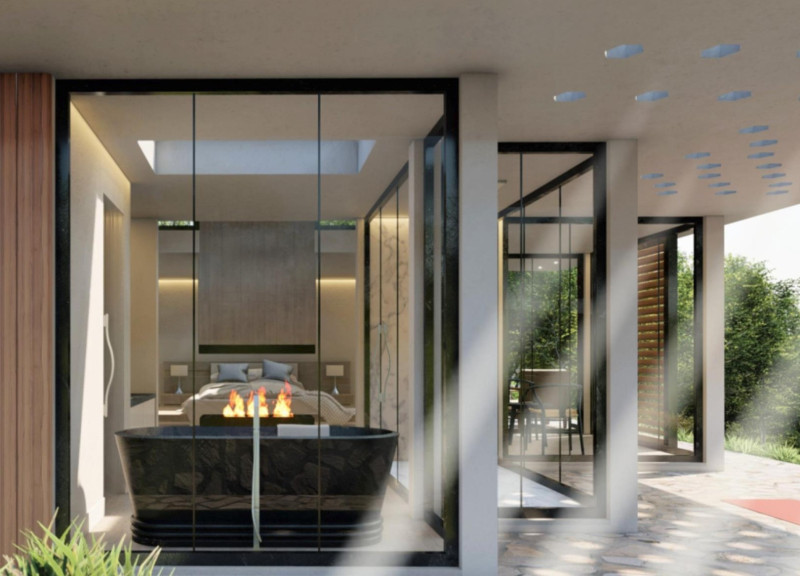5 key facts about this project
The cabin is set in the scenic landscapes of New Zealand, surrounded by lush pastures typical of sheep farming. Its main purpose is to serve as a retreat for two people, focusing on privacy and a connection to nature. The design concept emphasizes a peaceful space where individuals can escape daily life and enjoy the beauty of the environment.
Siting and Privacy
The cabin is carefully placed to ensure it is hidden from the main road and nearby trails. A Saut-de-loup, or 'Ha-ha wall,' is used to block the view from passing vehicles. The gentle slope of the landscape lowers the living area, supported by a natural stone retaining wall. This design choice not only enhances occupant privacy but also harmonizes with the contours of the site.
Interior Layout and Functionality
Inside, the layout promotes easy movement between bathing, dining, and sleeping areas. Each space is arranged to take advantage of the views of the Firth of Thames and the Coromandel Range, allowing occupants to feel connected to the outdoors. Lightwells help bring sunlight into the cabin, creating a lively atmosphere throughout the day. Skylights allow for stargazing at night while filling the interior with natural light during the day.
Material Selection and Sustainability
The materials chosen for the cabin reflect a focus on sustainability and local sourcing. They include locally sourced exterior wood finish, zero VOC painted cement board, painted sheet metal fascia, dual pane low-E coating glass, and locally sourced flagstone pavers. These selections not only add to the cabin's visual appeal but also support environmental goals by reducing transportation emissions.
Natural Integration
The design emphasizes a strong relationship between the cabin and its natural surroundings. It encourages occupants to breathe in the fresh air and enjoy stunning views, promoting a lifestyle connected to nature. By combining functional design with respect for the environment, the project showcases how architecture can foster a sense of calm and well-being while blending effectively within its landscape.






















































